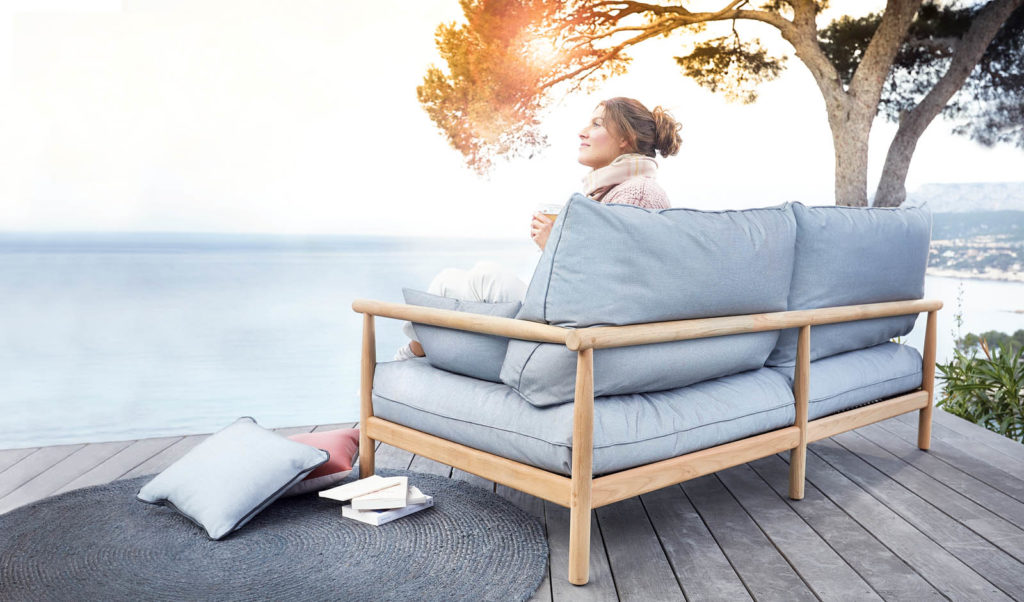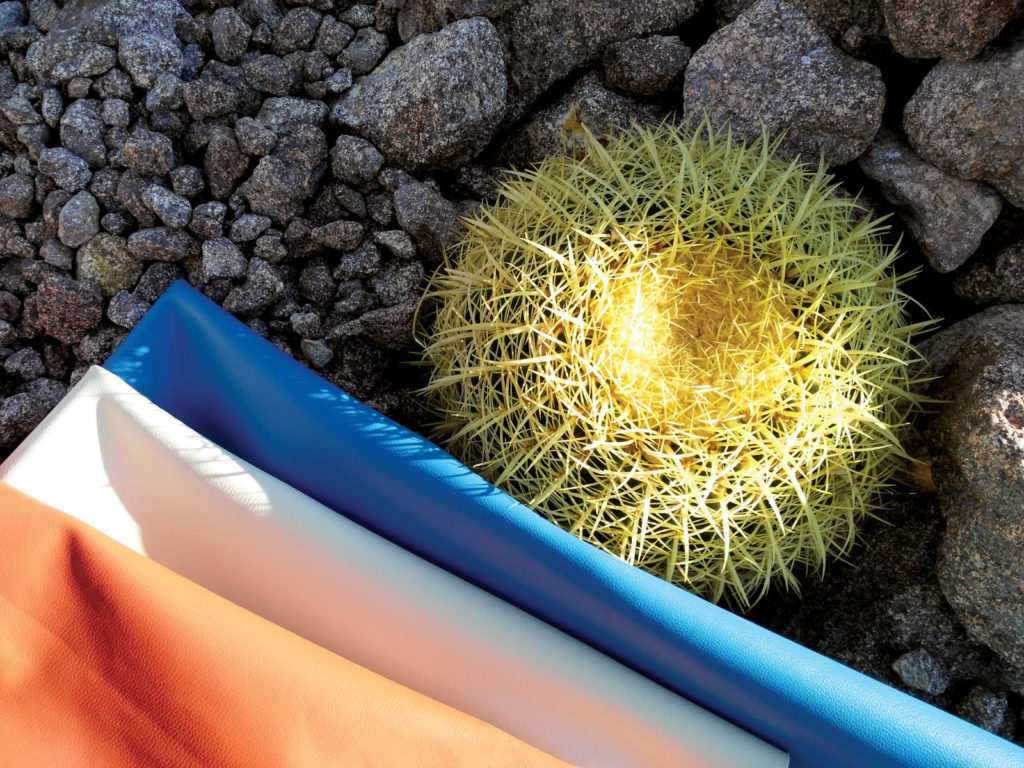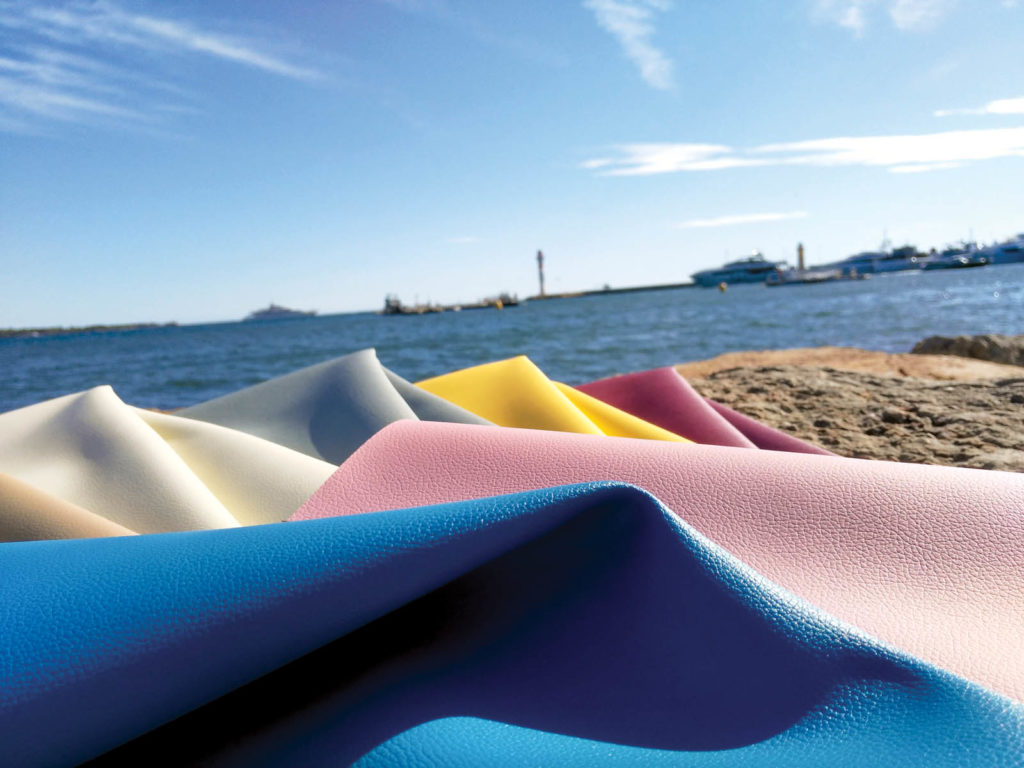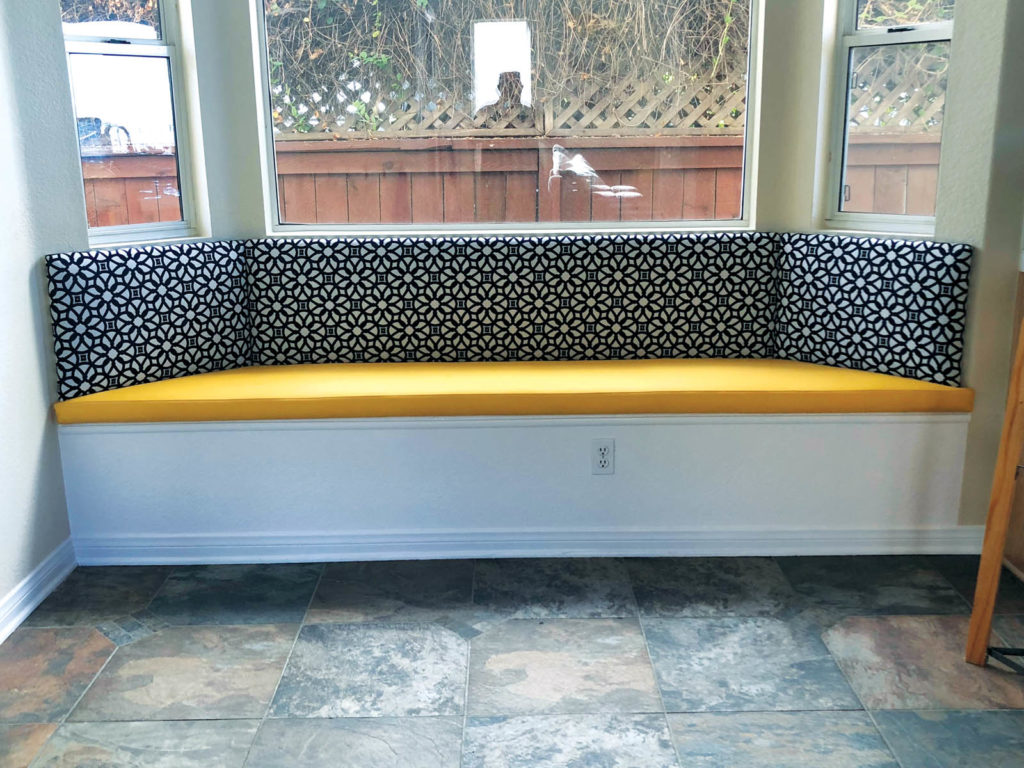
Green. Sustainable. Environmentally friendly. These issues are top of mind for manufacturers of all kinds, and outdoor fabric manufacturers and end product manufacturers are no different. But what does it all mean? How does one measure immediate impact against long-term impact? How do businesses meet the needs of consumers and do their part for the environment—all while maintaining the bottom line? There are no easy answers, but outdoor fabric manufacturers are asking the right questions—and in response are developing innovative fabrics that address sustainability in all its complexity.
“Sustainable development is development that meets the needs of the present without compromising the ability of future generations to meet their own needs,” according to the U.N. World Commission on Environment and Development. What that means for all manufacturers is that they need to measure the “now” against the “later”—not unlike how all consumers need to manage their bottom lines.
What a client wants
When clients come through an end product manufacturer’s door needing an outdoor fabric application, they aren’t often leading the conversation with what’s best for the environment—but they’re almost always interested in purchasing something that will last. “For the most part, clients aren’t asking about sustainability. They’re looking more for longevity,” says Scott Kirsch, owner of SK Upholstery, a full-service upholsterer located in San Diego, Calif. “But when I let them know about fabrics that are made from recycled products, they’re happy to hear it.”
For Kirsch, one such recent environmentally friendly addition to his fabric offerings is Revolution Performance Fabrics, manufactured from recycled olefin fabric and other upcycled materials. “Since the pandemic, we encountered a backlog from our usual outdoor fabric supplier,” Kirsch says. “So we found Revolution [Performance Fabrics] that are made in the U.S. and are available in a selection of colors and patterns.”
An unexpected benefit of finding a new supplier for Kirsch included access to a more expansive design palette for his clients. “Clients have been more receptive to the new line because of the patterns,” Kirsch says. “These fabrics can feel like indoor upholstery fabrics that are made for the outdoors.”
While the fabrics are warrantied for five years, Kirsch does not have that much time under his belt to speak to the longevity of the products. “Because of that, I can’t speak to its durability but I haven’t had any complaints or returns since the beginning of the pandemic when I started using it,” he says.

Ocean-bound waste
Zoom out to consider the broader impact that fabric choices can have on the environment. “The statistics of how much plastic enters our oceans each year, and the potential harm this plastic and fishing nets bring to marine animals and coral reefs, are astounding,” says Kyle Sharpe, vice president, textile operations of outdoor fabric manufacturer EverTru® Fabrics. “We developed Oceantex to make more of an effective impact on our environmental footprint.”
Launched in 2021, EverTru Fabrics, a division of Arden Co., introduced Oceantex Collection—a sustainable fabric offering for outdoor cushions and pillows. The fabric, produced from ocean-bound plastics such as bottles and discarded fishing nets, has allowed the company to divert more than 3 million pounds of plastic waste from entering the ocean. The company offers two lines of products—a printed polyester fabric line and woven fabrics. The polyester prints are made using recycled plastic bottles and the woven olefin fabrics are made from fishing nets. “These nets are abundant in the water and on the beaches, and are one of the most harmful [elements] to sea life than any other plastic,” Sharpe says.
Arden also produces standard recycled fabrics such as solution-dyed polyester and polyester prints made from recycled bottles that would otherwise end up in landfills. “We are currently in development to add more recycled fabric types to our offerings as well as biodegradable performance fabrics,” Sharpe says.
Long-term performance
Batyline Elios, by Serge Ferrari, was created both to answer a demand initiated by the cruise line industry for a soft-touch material with a high cleanability and abrasion resistance, and to be sustainable and compliant with the cruise line requirements. Serge Ferrari’s products boast a minimum of 400,000 double rub cycles and are extremely cleanable. “For us, sustainability doesn’t just mean using recycled product or being recyclable,” says Laurent Pellequer, development market manager for furniture and marine, Serge Ferrari North America. “Sustainability also means long-term performance. The better and longer the material performs, the longer it will stay in use, minimizing the need for new raw materials or disposing to a landfill.”
The biggest challenge in creating durability and sustainability has to do with the balance between the chemical compounds that provide UV-resistance, protection against color fading, mildew, etc. “If you want to be sustainable, you have to find the right balance or otherwise substitute [something] to fight against the elements,” Pellequer says. “Sustainable fabrics also need to be safe to humans, with touch/use, indoor air quality, fire safety and more. Sustainability cannot be approached in small half-measures; it must be a part of the corporate mission, as it is with Serge Ferrari Group.”

Coatings
Where performance is concerned, the topic of coated versus built-in additives is worth considering. Among other things, how long the coating lasts impacts sustainability. “There are some fabrics that have coatings as an add-on to make the fabric last longer but when you wash them, the coating comes off and it’s not cost effective,” Kirsch says. “It can be better to have something built into the fabric to repel staining and UV-resistance as opposed to a topical treatment.”
Additionally, coated fabrics are often produced with hazardous chemical additives and flame retardants to achieve higher performances, such as water resistance, cleanability, softness and flame retardancy. “These products continuously release hazards into the air over time that cause health concerns to humans and the overall environment,” says Gloria Mei, regional manager of Sileather®, Duluth, Ga., which produces a silicone fabric as an environmental alternative to vinyl and polyurethane. “Having a high-quality product will always be on a customer’s priority list but when choosing materials that are expected to last for years, other concerns remain at the top of the list in addition to sustainability, durability, comfort, etc.”
But when considering coatings, “silicone-coated fabrics are a new type of coated fabric,” Mei says. “The production of the silicone-based material utilizes techniques that use less water and creates less waste than other coated fabrics. Sileather’s silicone coating does not require additives or additional finishes to make it more durable.
“The performance of Sileather silicone fabric is unmatched in resistance to abrasion, cracking, fading, staining and weather, and can be cleaned and disinfected with a bleach solution,” Mei continues. “In addition, our silicone fabrics are PVC-, polyurethane- and BPA-free; made without the use of plasticizers or phthalates; and meet REACH and California Prop 65 standards.”

Natural vs. synthetic
Perhaps the major sticking point for consumers as they consider sustainability has to do with whether fabrics are constructed of natural or synthetic materials. Natural fabrics are renewable, biodegradable and in some cases inexpensive. But certain synthetic fabrics can be produced from waste and have the additional benefit of durability. “I feel as though many people attach sustainability with strictly the use of natural fibers,” Sharpe says. “Natural fibers can make great products but there are downsides to natural fibers, including water usage and synthetic chemicals and pesticides used in the cultivation of the fibers.
“The other misconception I see in the sustainable fabric market is that people think they need to sacrifice comfort and quality with sustainable products, which is not the case,” he continues. “Oceantex produces several recycled fabrics that perform and have the same durability level as standard synthetic textiles.”
As with anything, understanding what makes outdoor fabrics green and sustainable must take into account short-term and long terms impacts on the environment—and it falls on end product manufacturers to translate those considerations to their clients as they manage their bottom lines.
Sigrid Tornquist is a writer and editor based in Minneapolis, Minn.
SIDEBAR: Suppliers weigh in on sustainable design challenges
“One of the biggest challenges I see is the ability to increase global collection point capabilities specifically for ocean-bound plastics in order to keep up with the demand for recycled and sustainable products. I believe there are opportunities for countries to incentivize and bring more awareness to recycling along with implementing recycling policies.”
Kyle Sharpe, EverTru® Fabrics
“The various chemical compounds are what gives a product its characteristic against UV, color fading, UV protection, etc. If you want to be sustainable, you have to find the right balance [between chemicals and performance] or otherwise substitute to fight against the elements.”
Laurent Pellequer, Serge Ferrari North America
“Silicone-coated fabrics are a new type of coated fabric, so it takes a lot of time and effort to educate the public about the benefits and advantages over more traditional types [of coatings].”
Gloria Mei, Sileather®
SIDEBAR: GREENGUARD—What to know
GREENGUARD Certification helps manufacturers make and market products that have low chemical emissions and contribute to healthier indoor air.
The GREENGUARD Certification mark communicates that representative samples of a product have undergone rigorous scientific testing to meet some of the world’s most stringent chemical emissions requirements. This certification gives manufacturers a distinct competitive advantage in a marketplace in which consumers are increasingly concerned about the potential health effects of products.
Timeline to achieve certification:
Though timelines vary depending on a number of factors, including the complexity of the product, compliance of the sample tested, the number of manufacturing locations and the number of test groups, the following timeline is an approximation:
1. Manufacturer initiates intent to certify (one day)
a. Application
2. Certification plan developed (one to four months)
a. Planning meeting
b. Manufacturing review
c. Product evaluations
d. Test groups established
3. Certification compliance tests (two to three weeks)
4. Final certification compliance package submitted to UL Environment (one week)
5. GREENGUARD Certification awarded (one week)
(Source: ul.com/services/greenguard-certification)
 TEXTILES.ORG
TEXTILES.ORG


